Using science to make the best chocolate
- Like
- Digg
- Del
- Tumblr
- VKontakte
- Buffer
- Love This
- Odnoklassniki
- Meneame
- Blogger
- Amazon
- Yahoo Mail
- Gmail
- AOL
- Newsvine
- HackerNews
- Evernote
- MySpace
- Mail.ru
- Viadeo
- Line
- Comments
- Yummly
- SMS
- Viber
- Telegram
- Subscribe
- Skype
- Facebook Messenger
- Kakao
- LiveJournal
- Yammer
- Edgar
- Fintel
- Mix
- Instapaper
- Copy Link
Posted: 11 August 2006 | Dr Stephen T. Beckett, Nestlé PTC York, UK | 1 comment
When Fry had his first chocolate factory in Bristol in 1847 (Figure 1), it produced the only manufactured chocolate bar and so was obviously the best one. Looking around the world today, things have changed a lot.
In the USA the largest selling chocolate bar is produced by the Hershey Company and it tastes completely different to the UK’s number one bar, Cadbury’s Dairy Milk. In China, however, Mars Dove leads the sales and this, once again, tastes very different to the other two. It is often the case that the first chocolate on the market becomes the most popular, because this is what the customer is used to.
When Fry had his first chocolate factory in Bristol in 1847 (Figure 1), it produced the only manufactured chocolate bar and so was obviously the best one. Looking around the world today, things have changed a lot. In the USA the largest selling chocolate bar is produced by the Hershey Company and it tastes completely different to the UK’s number one bar, Cadbury’s Dairy Milk. In China, however, Mars Dove leads the sales and this, once again, tastes very different to the other two. It is often the case that the first chocolate on the market becomes the most popular, because this is what the customer is used to.
When Fry had his first chocolate factory in Bristol in 1847 (Figure 1), it produced the only manufactured chocolate bar and so was obviously the best one. Looking around the world today, things have changed a lot.
In the USA the largest selling chocolate bar is produced by the Hershey Company and it tastes completely different to the UK’s number one bar, Cadbury’s Dairy Milk. In China, however, Mars Dove leads the sales and this, once again, tastes very different to the other two. It is often the case that the first chocolate on the market becomes the most popular, because this is what the customer is used to.
This means that there is no such thing as a universally ‘best’ chocolate. However, there are many factors that affect our preference and some of the main ones are listed here:
- What the consumer is used to
- Appearance
- Viscosity
- Flavour
- Rate of melt
- Conditions in the eating location
Appearance is an obvious factor, as no one likes misshapen chocolate. In addition, German work in the 1990s found that the consumer preferred thinner (lower viscosity) chocolate and that with a more intense flavour. The results are shown in Figure 3 and these two factors will be dealt with in detail in this article.
The rate of melt and eating conditions are also important. This can be illustrated by dividing a bar of chocolate into two, placing half in a refrigerator and leaving the other half in a warm room. If these are eaten at the same time they will appear to be very different chocolates. Science cannot help with this, other than to produce chocolate that is most appropriate for the eating occasion e.g. especially for ice-cream or with added heat resistance or adjusted melting properties.
Appearance
Chocolates that are shaped incorrectly are obviously rejected by the consumer. However, preferences can still exist even for correctly formed chocolates. Leatherhead Food International in the UK (Subramaniam et al., 2005) carried out consumer research on attitudes to gloss. Unsurprisingly they found that scratched products were not liked and that a good gloss was preferred. However the surface could look too glossy and was regarded as being artificial, or not being made with proper chocolate ingredients. Certain colour/gloss combinations were also preferred.
The study went on to look at the manufacturing factors which affected gloss. Crystallisation of the fat (temper) was very important as was the amount and type of fat. Certain cocoa butter replacement fats (used to make products such as cooking chocolate) can be too glossy. A rather more unexpected finding was that the size to which the solid particles (sugar, cocoa etc) are ground during chocolate making has a significant effect on consumer preference. In this investigation a maximum particle size of 20 microns was regarded as optimum.
Link between flavour, viscosity and particle size
Liquid chocolate is used to make the final product. If it doesn’t flow properly, then misshapen or incorrect weights will occur. The flow properties (viscosity) will, however, also affect the taste of the chocolate.
When eating chocolate it becomes liquid in the mouth. There are separate flavour detectors within the mouth and nose that register different components, e.g. sweet, sour etc. The rate at which molecules reach these detectors changes the perceived taste of the substance being eaten. This means that two chocolates can contain exactly the same ingredients, but if one is manufactured to flow very easily, it will taste very different to chocolate that is much thicker. The German work (Figure 2) indicates that the thinner chocolate would generally be preferred.
When making chocolate the sugar is ground from a few mm in diameter to less than 30 to 40 microns (0.03 – 0.04 mm), otherwise the chocolate would taste gritty and not be smooth in the mouth. The eventual fineness of the chocolate not only affects the appearance (as noted earlier), but also the viscosity and taste. As the solid particles, which include non-fat cocoa and milk are ground finer, the surface area of the particles increases, which in turn makes it more difficult to flow. This will be dealt with in more detail later.
The effect of particle size on flavour is different for dark and milk chocolate. If the same plain chocolate is milled to a finer particle size then the intensity of the cocoa flavour will increase. In milk chocolate there is a balance between milky/creamy flavours and the cocoa ones (Figure 3). Thus, when milk chocolate is milled to a finer particle size it will have a creamier taste / texture and the cocoa intensity will decrease.
Leatherhead Food International carried out a study to determine which factors had the greatest effect upon the creaminess of milk chocolate (Clegg et al., 2005). The variables included fat content, milk powder, ratio of cocoa butter to milk fat and maximum solid particle size. The results indicated that the latter had the biggest effect upon creamy texture, but less so upon creamy taste.
Optimising chocolate ingredients
Dark chocolate is mainly composed of cocoa liquor (mass) and sugar, whilst milk chocolate also contains dried milk components. Each of these components can be modified to change the final product.
Cocoa liquor
Factors such as the type of cocoa bean, where it is grown and how it is treated (in particular the fermentation process – see for example Fowler 1999) will all affect the quality of plain chocolate. Once they reach the factory however, the temperature to which the beans are roasted can be critical. Figure 4 illustrates the problem of roasting different sized beans.
Many years ago it was possible to separate different sizes of beans and roast them to different temperatures. This is no longer economically viable for large throughputs, so other methods are used. One involves removing the shell and just roasting pieces of the cotyledons, known as cocoa nibs. The temperature/time to which the cotyledons are roasted has an effect on the flavour balance of the final chocolate. This was illustrated by ADM cocoa (Lemmen, 2004), see Figure 5. As the roasting is increased, not surprisingly, the degree of roast flavour increases, but other factors are also affected. As Figure 5 shows the cocoa flavour increases, but the acidity decreases.
Cocoa liquor, also known as cocoa mass, is obtained by grinding the centre (cotyledons) of the cocoa beans once the shell has been removed. The size to which this is ground will alter the viscosity of the final chocolate as the cocoa butter is contained within cells within these cotyledons. The cell walls must be broken to release this fat, which in turn helps the chocolate to flow (Beckett, 2000).
Cocoa liquor has a very intense flavour, however, and is not liked by most people, as in addition to chocolate flavour it also contains acidic and astringent components that must be removed by further processing. The type of flavour, as well as its intensity, is therefore very important.
Sugars
These provide the sweetness and also affect the viscosity, cooked flavour and (in certain cases) provide a cooling sensation.
Sucrose is the most common sugar used, although milk chocolates also contain lactose. Other sugars such as glucose can be used to limit the sweetness level, as well as sugar alcohols to reduce the calorific value.
Sucrose is usually used in a crystalline form, but can sometimes take a glassy amorphous structure. The amorphous form can bind in flavours, which can be advantageous, but it can also make the chocolate very thick. This is because it attracts moisture and sticks individual small particles together preventing them from flowing easily (like sugar in a bowl under very humid conditions). This property has been used to make a heat resistant chocolate to sell in hot countries.
There have been many developments in making lower calorie chocolates using sugar alcohols or polydextrose etc. (Kruger, 1999). Some require additional intense sweeteners such as aspartame, whereas others give a cooling effect as the chocolate melts in the mouth. Most tend to have a laxative effect and so limit consumption. A lot of progress is being made, however, and some sucrose replacers have been used to produce chocolates with similar taste and texture to the standard product. Regulatory restrictions limit the use of some of them in certain countries.
Milk
Because water sticks sugar particles together it is essential that as much moisture as possible is removed from the ingredients. This means that liquid milk must be fully dried. For chocolate making there are three main drying processes: roller drying, spray drying and the crumb process. There are two factors that give rise to differences in the finished chocolate:
- The amount of the fat that is present in a free form (to help the chocolate flow)
- The amount of cooked (Maillard) flavour that develops during the drying process
Roller drying is usually carried out on full fat milk and forms platelet-like particles with most of the fat on the outside. This helps the chocolate flow properties and the temperatures used create a small amount of flavour development.
The most common full cream milk powder (fcmp) production method is spray drying. This produces spherical particles as is illustrated in Figure 6. The fat is contained in a shell formed largely of milk sugar, called lactose. Most of the fat is trapped within the shell and so is unable to aid the viscosity of the chocolate. In addition, the sugar is largely in the glassy or amorphous state, which is also detrimental to the flow properties.
Skimmed milk powder (SMP) is also produced. This has the advantage that the milk fat can be added separately and so will all be in the free form. This produces the lowest viscosity chocolate, but as the drying is carried out at a relatively low temperature there is little cooked flavour. Traditionally this powder is said to give the poorest flavour.
The chocolate crumb process was developed in the 1930s, when the milk powders had poor keeping properties. Most chocolate was sold around Christmas, whereas the bulk of the milk supply was in the spring. In order to preserve the milk, sugar was added as in jam making. It was also found that adding cocoa liquor extended its shelf-life. It is now known that this is due to the anti-oxidants that also give chocolate its positive health effects. When this mixture is dried, there is an increased amount of Maillard reaction, giving the chocolate a more cooked taste. Some fat is trapped, but not as much as in full cream spray dried milk powder. The relative advantages of the different types of dried milk are shown in Table 1.
Science is adapting the processing of some of these powders to adjust the flavour profile of the milk powder, or get the fat in a freer form. Spray dried milk powders are commercially available with crumb type flavours. Also, a technique has been developed to seed the lactose and make it crystalline as it forms during spray drying, so that it releases the fat.
Several university-based groups have also developed new techniques for modifying milk based ingredients to improve the flow properties of the final chocolate. Professor Ziegler at Penn State University in the USA has used a type of extruder known as a Teledyne Readco to extrude the milk ingredients. This has the effect of crystallising the lactose and releasing the butteroil (Beckett, 1999).
Following lactose and butter fat, the third largest component of dried milk is protein. This is known to have an effect on the viscosity of chocolate due to its behaviour as an emulsifier. Professor Windhab at ETH in Zürich, Switzerland has produced novel fibre shaped protein particles known as spin milk (Windhab, 2004). As the chocolate flows, the fibres spin and reduce the apparent viscosity by approximately 30% when they are present at about 10% of the volume.
Optimising the chocolate making processes
The following outline two main parts of the chocolate making process; grinding and liquefying/flavour finishing, known as conching.
Grinding
The most common method of grinding chocolate is to use a roll refiner (see Figure 7).
The ingredients pass between temperature controlled rolls which are pressed together and whose speed increases from the feed to the exit roll. These rolls can be up to 2.5 metres long. The final particle size of the chocolate can be determined by adjusting the gap of the feed roll and the ratio of the speed of the rolls.
Each time a particle is broken it produces more surface area to be coated with fat. The finer the particles are ground, the more fat is required to coat the surfaces to enable them to flow past each other. Particles must be small enough not to taste rough (usually < 30 to 40 microns) and indeed below this size the mouth is able to detect differences of about 3 microns. Controlling this size is critical and some roll refiners have automated control systems to maintain a pre-programmed maximum particle size.
It is not only the largest particles that are important; the small ones play a major role as well. These have a very large surface area and so use up the fat, making the chocolate thicker. In order to optimise flow and yet not have a rough chocolate when using industrial machinery, it is necessary to have as high a proportion as possible greater than approximately 11 microns, and to minimise those below approximately 4 microns.
Different machines produce different size distributions (Figure 8).
The air classifier mill is able to operate by re-circulating only the larger particles through the milling chamber, with the smaller ones going on for collection. In the roll refiner all the particles pass through all the rollers, so breakage continues.
Conching
When the particles have been ground they are largely uncoated with fat and, certainly in the case of the Air Classifier Mill, material in powder form. The conche turns this into a liquid by a mixture of squeezing and heating (so that the fat is liquid and can coat the particles). In addition, the machine is ventilated to enable moisture and some acidic flavours to be removed. An example of a typical conche is shown in Figure 9. Inside this machine are three sets of arms which rotate and press the chocolate ingredients against the side walls, so coating them with fat and also breaking up any agglomerates into its individual components.
Conching is traditionally said to take place in the following three stages:
- Dry conching (powdery, removal of volatiles, increase in power as particles get coated)
- Pasty phase (continued coating)
- Liquid phase (when remaining fat is added)
Dr Ziegleder at the Fraunhofer IVLV in Munich, Germany has studied this process in detail (Ziegleder, 2004). He developed an analytical method of measuring the degree of conching using GC MS (gas chromatography, mass spectrometry) for Tetramethyl pyrazine and Benzaldehyde. Of particular interest was the flavour in the fat phase and sugar surface. Using samples from 6 tonne conches he correlated analytical tests with sensory results obtained by 14 panels containing 150 trained panellists.
When looking at the effect of the different stages of conching, a longer dry conching phase had a much higher preference than a long liquid conched chocolate (Figure 10).
When studying how the flavour components changed during conching, he found that his components evened out (Figure 11). The main factors affecting this change were found to be:
- Dry conching time
- Total energy/average power
- Speed of shafts
- Type of shafts
- Starting fat level
- Flavour of cocoa mass
- Temperature
- Ventilation
- Humidity
- Particle size distribution
Certain aspects of conching remain an art, but this type of work is enabling the manufacturer to carry out changes that will improve both the flavour and the viscosity of his products.
Conclusion
There is no such thing as a universal ‘best’ chocolate. However, science can teach us how to modify our chocolate in terms of flavour and flow properties, so that these can be optimised according to each product.
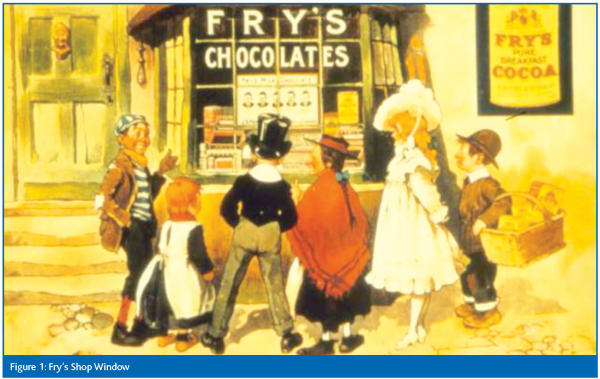

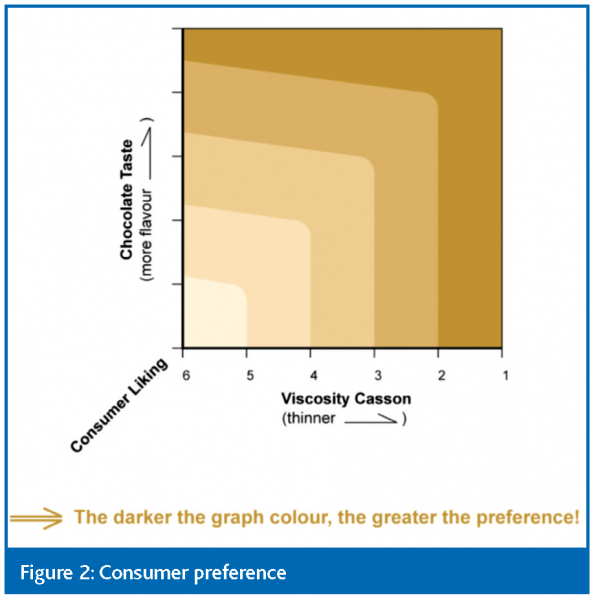

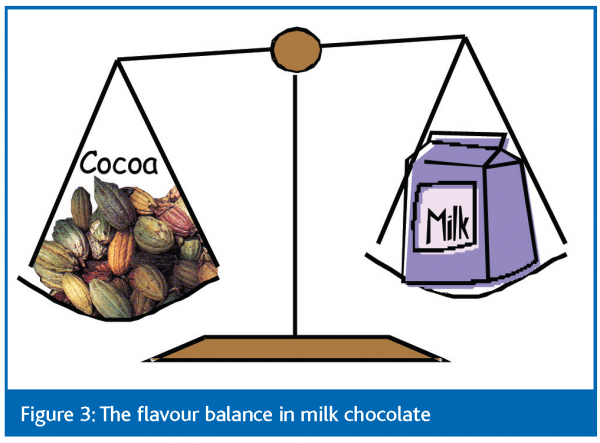

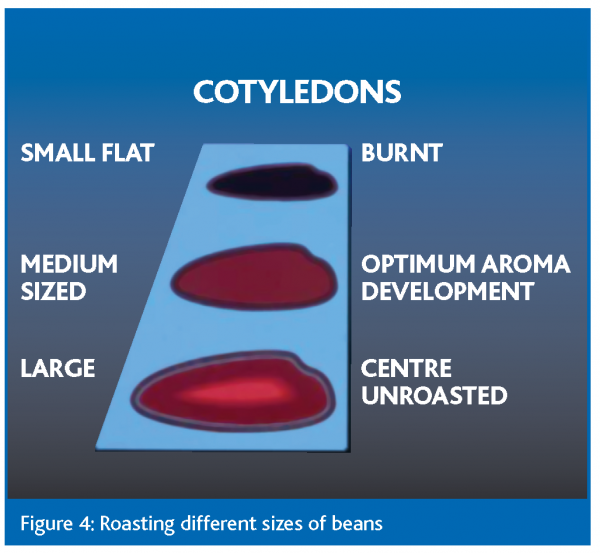

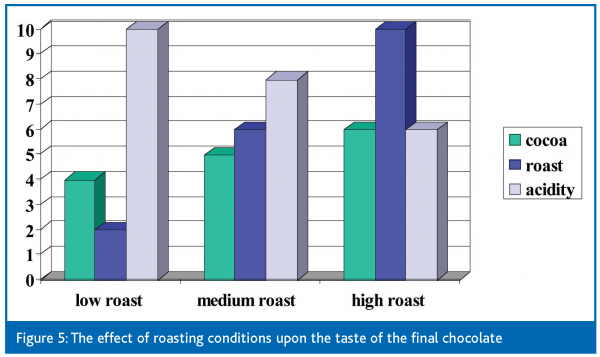

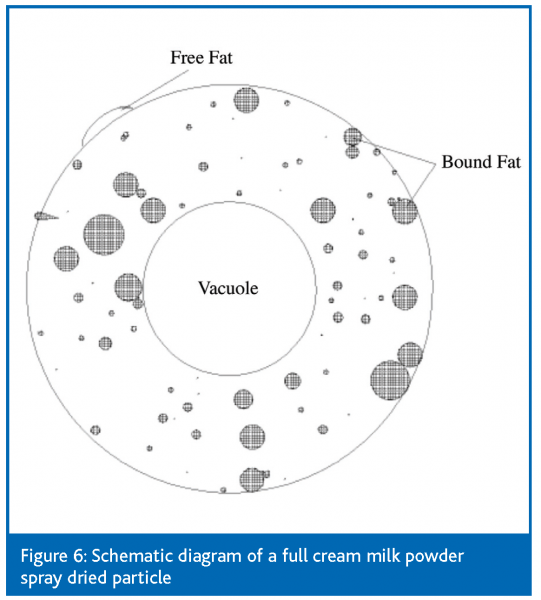

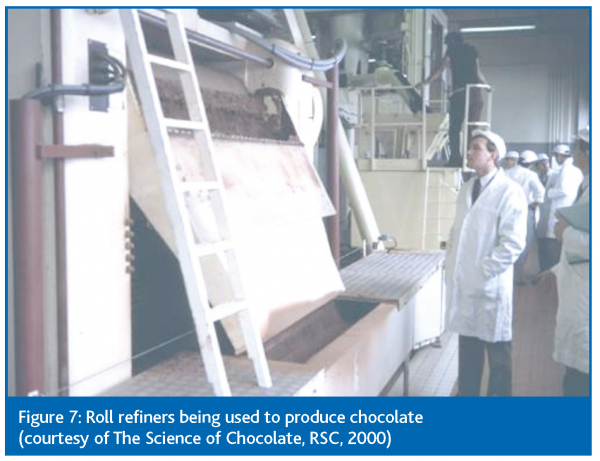

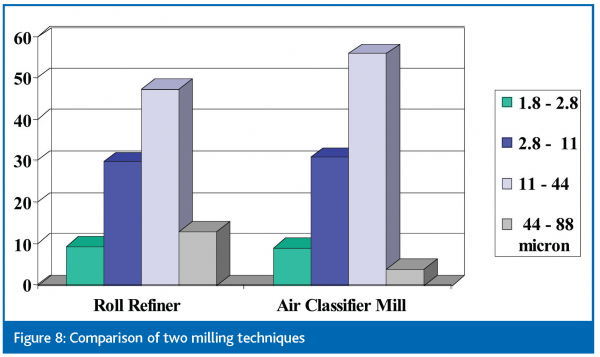

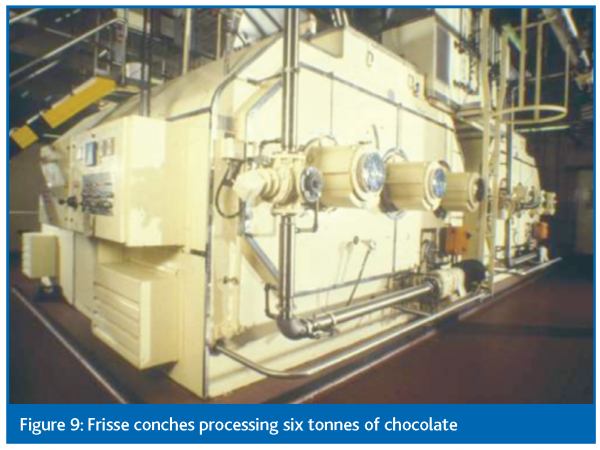

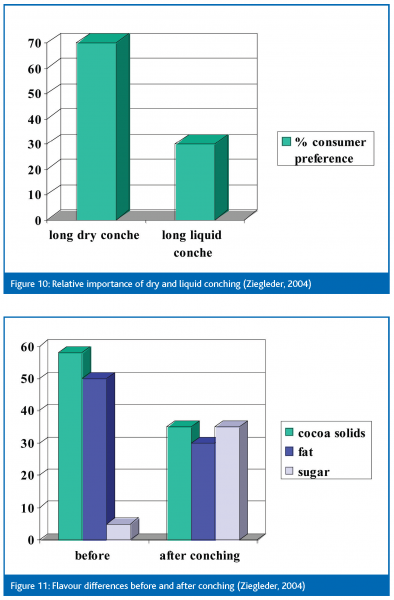

References
Beckett, S.T. (1999) Non-conventional Machines and Processes, in Industrial Chocolate Manufacture and Use, Beckett, S.T. (editor), Blackwell, UK.
Beckett, S.T. (2000) The Science of Chocolate, RSC, UK.
Clegg, S., Kilcast, D. and Lawson, S. (2005) The Perception of Creaminess in Solid Food Systems, LFI Research Report 868
Fowler, M.S. (1999) Cocoa Beans: From Tree to Factory, in Industrial Chocolate Manufacture and Use, Beckett, S.T. (editor), Blackwell, UK.
Krüger, Ch., (1999) Sugar and Bulk Sweeteners, in Industrial Chocolate Manufacture and Use, Beckett, S.T. (editor), Blackwell, UK.
Lemmen, E. (2004) The Function of Cocoa Liquor in Chocolate, ZDS Chocolate Technology Conference, 14th – 15th December, Cologne, Germany.
Subramaniam, P.J., Phelps, T. and Groves, K. (2005) Structural Basis of Visual Appeal and Influence on Customer Acceptability: Milk and Dark Chocolate, LFI Research Report 852.
Windhab, E. (2004) Influence of Particle Size, Shape and Morphology on the Rheological Properties of Chocolate Systems, ZDS Chocolate Technology Conference, 14th – 15th December, Cologne, Germany.
Ziegleder, G. (2004) A Greater Understanding of Your Conching Process, ZDS Chocolate Technology Conference, 14th – 15th December, Cologne, Germany.





Thanks for this excellent article on chocolate production. A first class and well informed overview for outsiders.